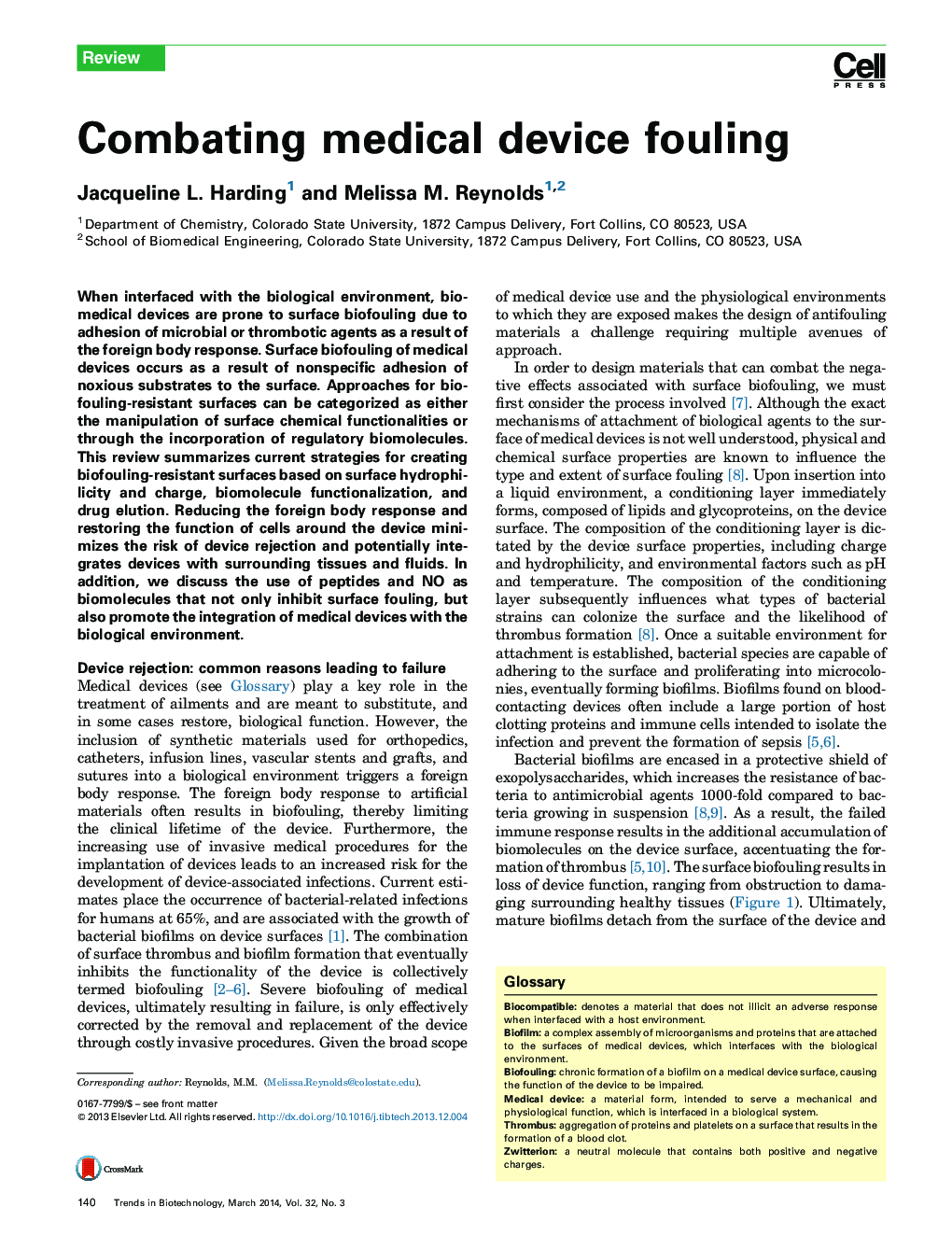| کد مقاله | کد نشریه | سال انتشار | مقاله انگلیسی | نسخه تمام متن |
|---|---|---|---|---|
| 37201 | 45322 | 2014 | 7 صفحه PDF | دانلود رایگان |
• Biofouling as a result of thrombus and bacterial biofilms leads to device rejection.
• Ideal devices treat the ailment, minimize adverse effects, and aid in regeneration.
• Chemical and surface properties of device materials dictates the biological response.
• Material design with passive and active approaches can be used to minimize biofouling.
• Material integration with tissues and fluids will lead to device incorporation.
When interfaced with the biological environment, biomedical devices are prone to surface biofouling due to adhesion of microbial or thrombotic agents as a result of the foreign body response. Surface biofouling of medical devices occurs as a result of nonspecific adhesion of noxious substrates to the surface. Approaches for biofouling-resistant surfaces can be categorized as either the manipulation of surface chemical functionalities or through the incorporation of regulatory biomolecules. This review summarizes current strategies for creating biofouling-resistant surfaces based on surface hydrophilicity and charge, biomolecule functionalization, and drug elution. Reducing the foreign body response and restoring the function of cells around the device minimizes the risk of device rejection and potentially integrates devices with surrounding tissues and fluids. In addition, we discuss the use of peptides and NO as biomolecules that not only inhibit surface fouling, but also promote the integration of medical devices with the biological environment.
Journal: - Volume 32, Issue 3, March 2014, Pages 140–146
